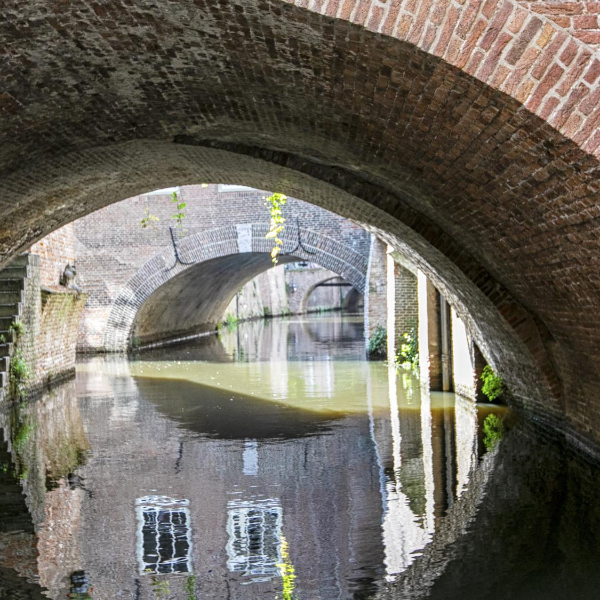New calculation method saves bridges from the wrecking ball

New calculation method saves bridges from the wrecking ball
The city of 's-Hertogenbosch has a lot of masonry arch bridges. Following research into the structural safety of civil engineering structures, these bridges have also been recalculated. But do conventional calculation programs still do the job? They often do not take into account all aspects of the bridge; for example, the surrounding soil has a significant impact on the force distribution of a masonry arch bridge. Also, a masonry arch bridge has different failure causes than a regular concrete or steel bridge. By treating these bridges in the same way as a modern bridge, masonry arch bridges are unduly rejected. This prompted the municipality of 's-Hertogenbosch to work in conjunction with four engineering firms, including Witteveen+Bos, to develop a new method. This allows us to calculate the actual strength of arch bridges much more accurately, saving countless historic bridges from the wrecking ball.
A joint approach
We joined forces with Iv-Infra, Royal HaskoningDHV, Nebest and the municipality of Utrecht to come up with a plan. Drawing on literature research, a conference in Porto (Arch 2019) and test loads carried out in England, we identified a number of suitable calculation programs and selected a new calculation model. The main requirement for the program was that it should be able to include not only the bridge but also the surrounding soil in the calculation model.
Testing the calculation model
The arch bridge on Nieuwstraat was used to validate the new calculation model. The bridge was fully surveyed, and the properties of the surrounding soil were determined. A test load was used to compare the expected deformations with the actual deformations at different load steps. The actual deformations were found to be smaller than the calculated deformations. The new calculation model therefore provides a reliable approximation of the strength of the bridge.
A quick scan method was developed and validated to avoid the need to subject each bridge to an extensive inspection. Currently, all masonry arch bridges in the municipality of 's-Hertogenbosch (about 40) have been tested with the quick scan and/or the extensive calculation model. Both the calculation model and the quick scan are explained in the report 'Approach to the constructive assessment of masonry arch bridges in 's-Hertogenbosch'. A manual for inspections and surveys was also drawn up to ensure that the bridges remain in good condition for the future.
The result
Thanks to this new method, we were able to save all 40 masonry arch bridges in the municipality of Den Bosch from the wrecking ball – thereby not only preserving historical heritage, but also saving the city a lot of time, money and traffic disruption.
Information session
On Wednesday 14 September 2022, an information session will be held on the structural safety of civil engineering structures and the latest findings in this field. Are you a bridge builder or bridge owner and/or is this knowledge relevant to your work? Keep an eye on the Platform Bruggen website to register for the session!
photo: Sandra Peerenboom
More information?

